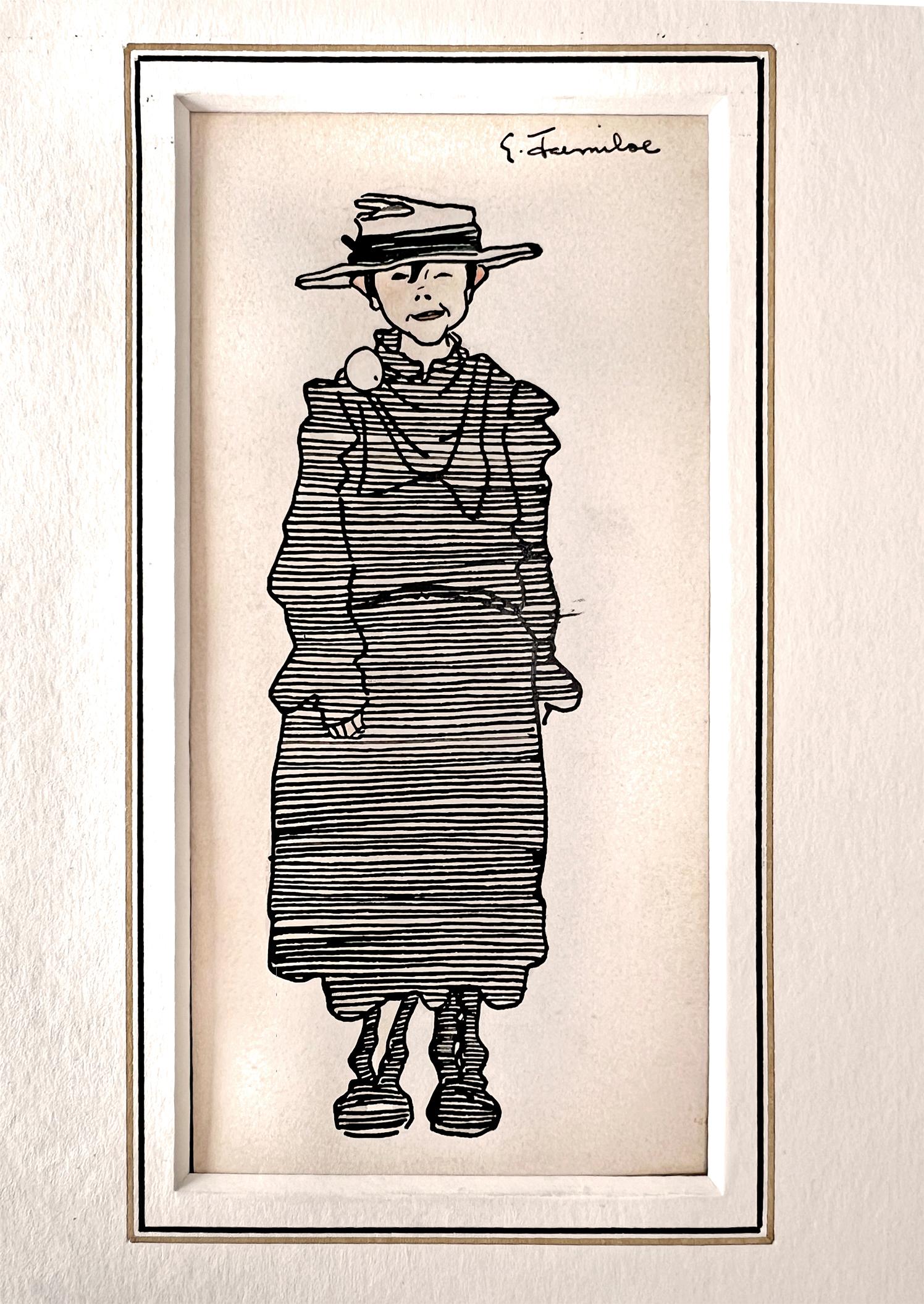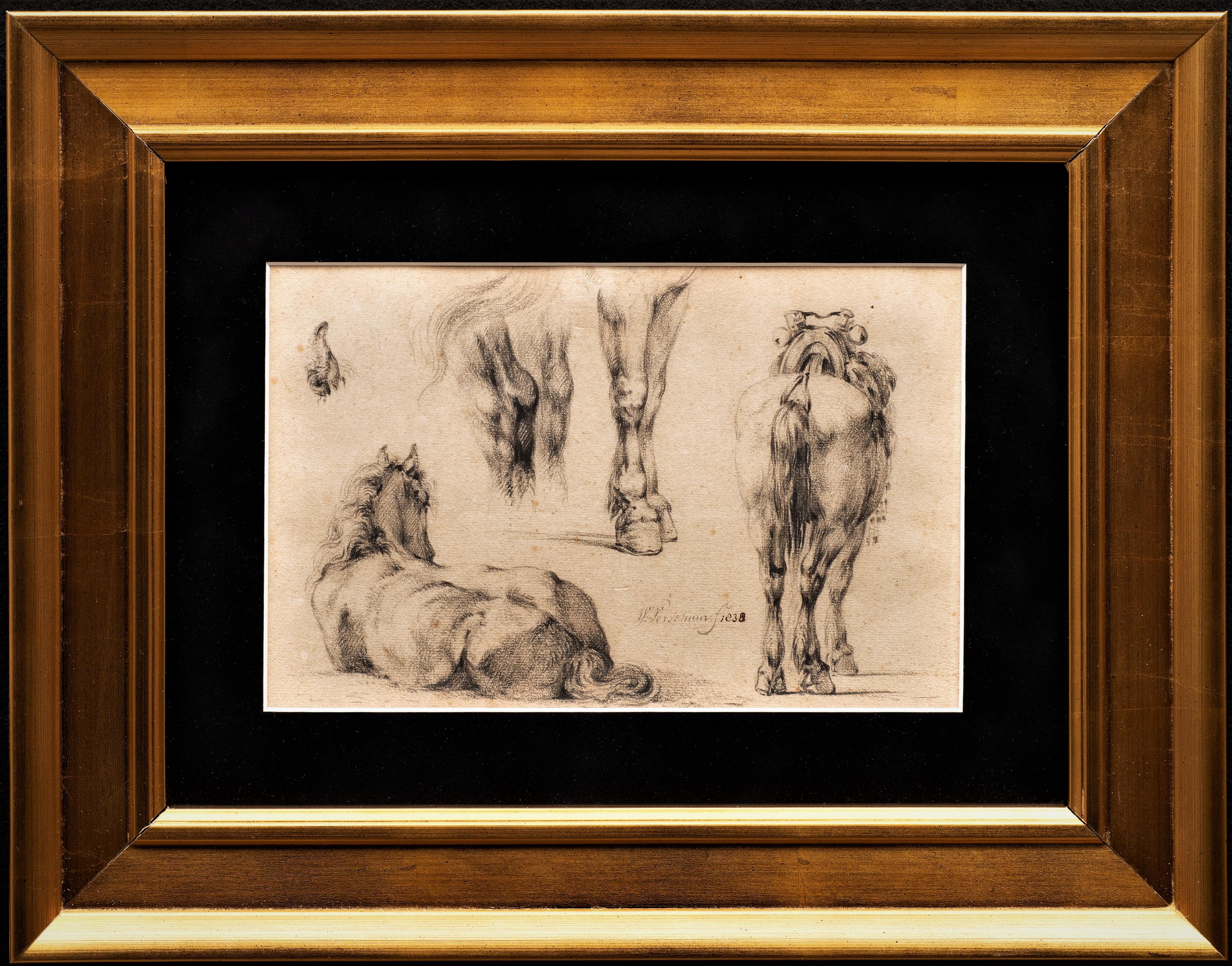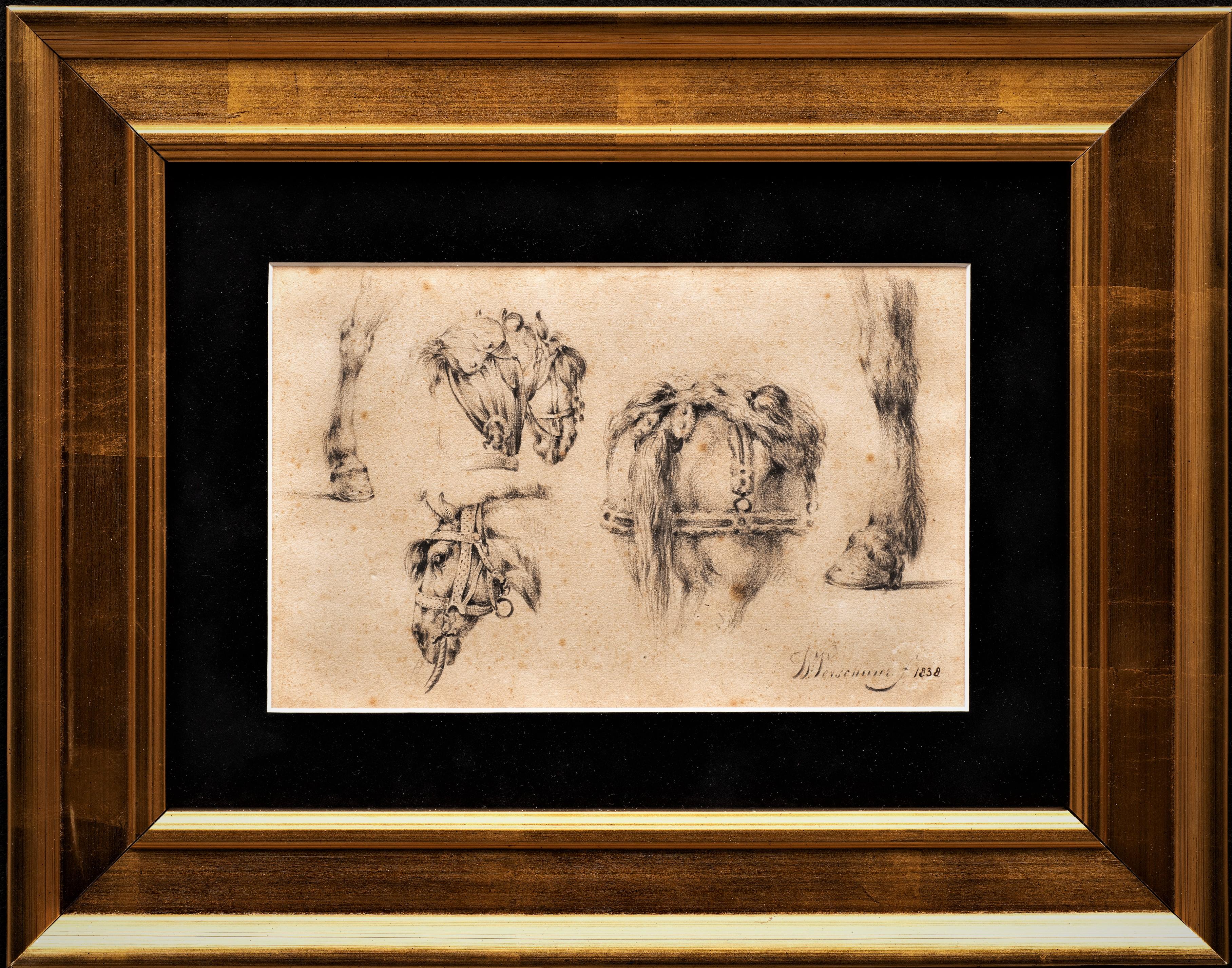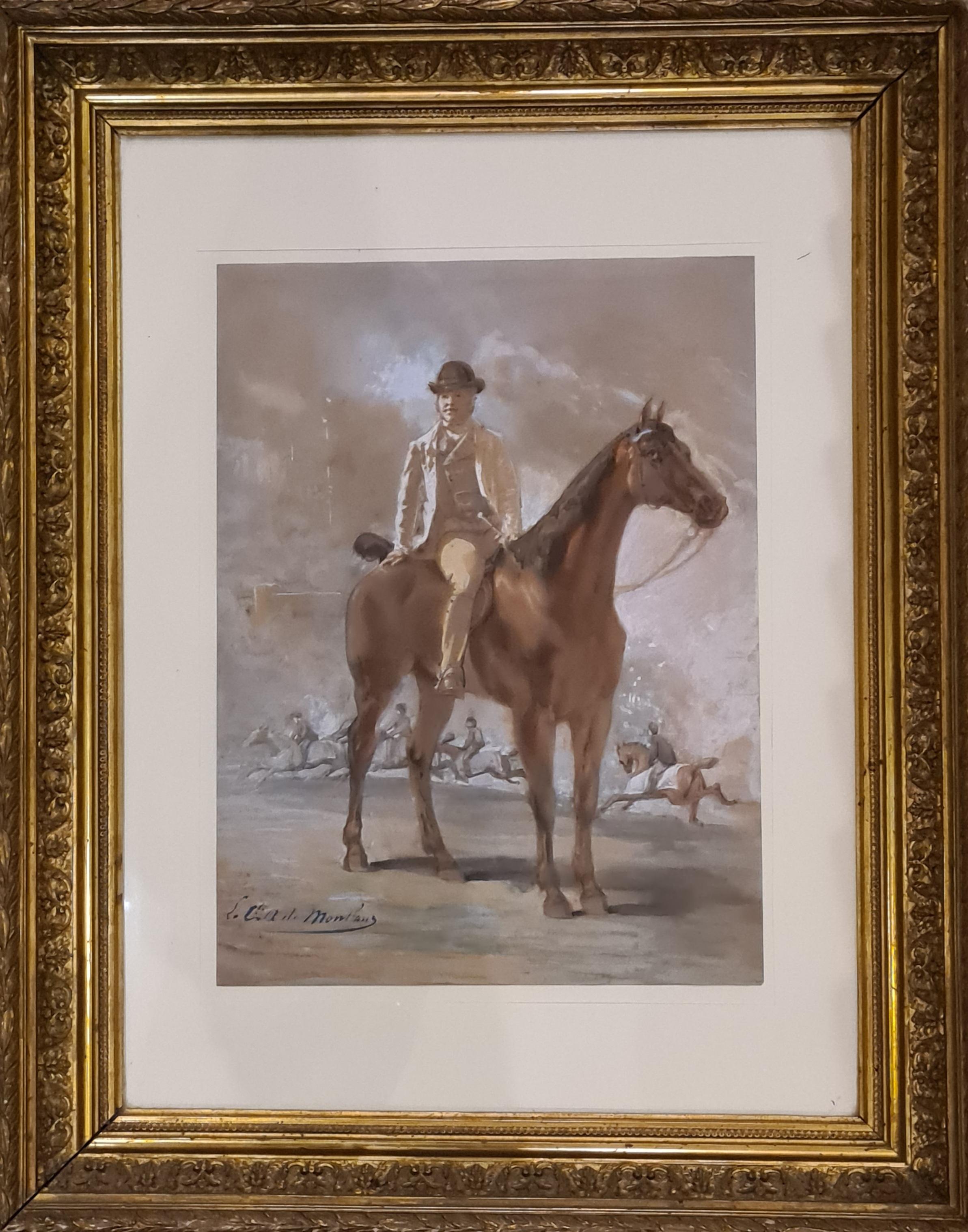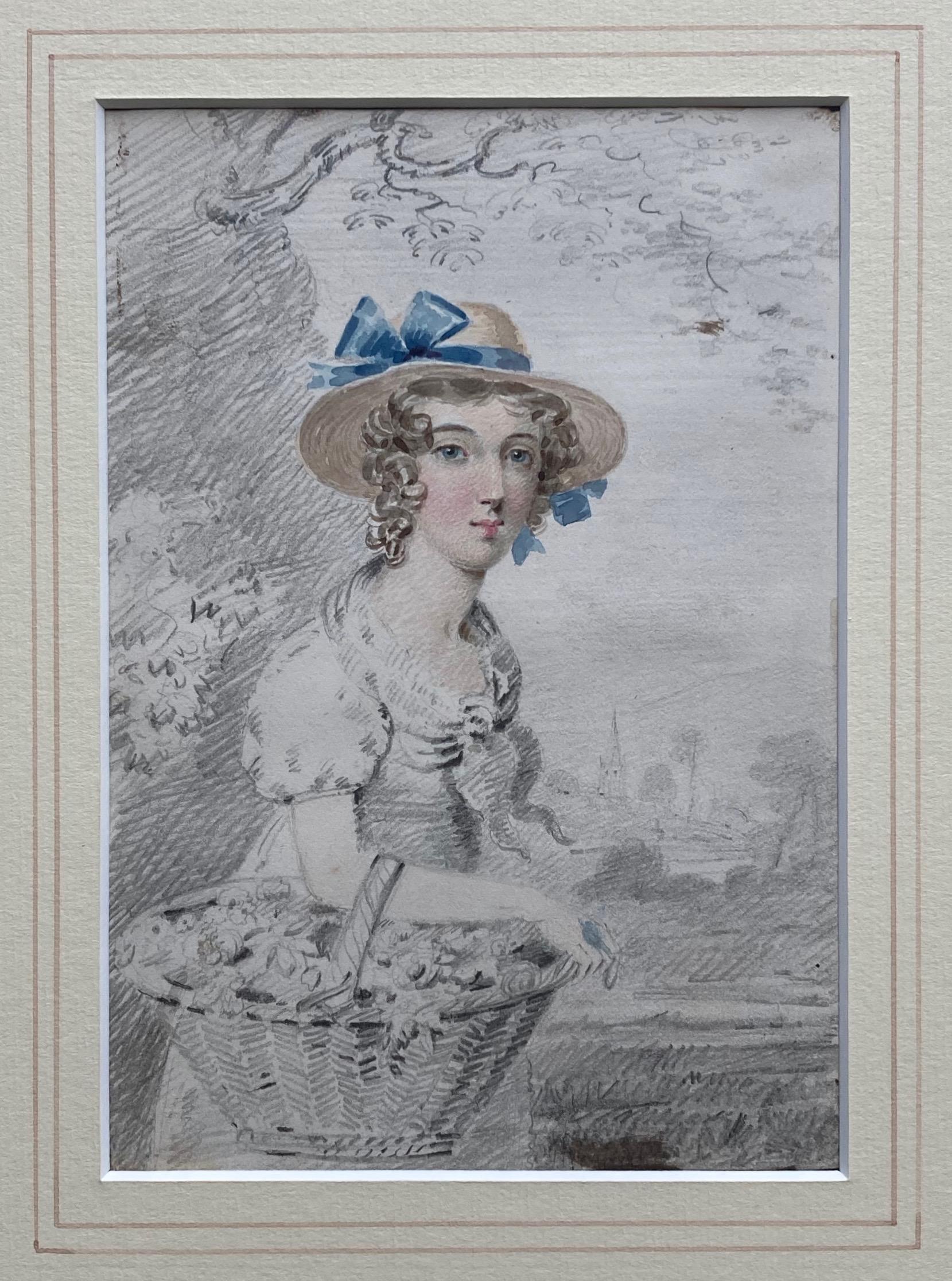George RichmondStudies of a statue and a sketch of a lady in ink
About the Item
- Creator:George Richmond (1809 - 1896, British)
- Dimensions:Height: 6.88 in (17.48 cm)Width: 9.75 in (24.77 cm)Depth: 1 in (2.54 cm)
- Medium:
- Movement & Style:
- Period:
- Condition:Surface dirt, possible grease spots. Minor foxing. In overall good condition. Framed in a mount with gilt washline behind glass in a silver and terracotta frame.
- Gallery Location:Petworth, GB
- Reference Number:1stDibs: LU54034374481
George Richmond
George Richmond was an English painter and portraitist, born in the UK in 1809. In his youth, he was a member of the Ancients, a group of followers of William Blake. He was a keen follower of cricket, always to be found at Lords. Richmond was a long life friend of Samuel Palmer and was a fellow student of Edward Calvert and Thomas Sidney Cooper. Richmond's later works are portraits of prominent figures of the day such as William Wilberforce. He is buried at Highgate Cemetery. Perhaps his most famous painting is a portrait of Charlotte Bronte, now held at the National Portrait Gallery.
- ShippingRetrieving quote...Ships From: Petworth, United Kingdom
- Return PolicyA return for this item may be initiated within 10 days of delivery.
- William Heath Robinson original drawing, British early 20th CenturyBy William Heath RobinsonLocated in Petworth, West SussexWilliam Heath Robinson (British, 1872 - 1944) 'Boring The First Tunnel With An Early Type Of Rotary Excavator, And The Red Flag', circa 1935 (railway ribaldry was published in this year) The former signed 'W. Heath Robinson (lower left) and inscribed with title (lower left and right) The former to mount 14 X 10.1/4in. (35.5 X 26cm.) The latter 1.1/2 X 8.1/2in. (3.8 X 21.6 cm.) Literature: Railway Ribaldry, first published by the Great Western Railway, Paddington, 1935. William Heath Robinson was an English cartoonist and illustrator best known for drawings of ridiculously complicated machines for achieving simple objectives. During the First World War, he drew large numbers of cartoons, depicting ever-more unlikely secret weapons being used by the combatants. In the UK the term "Heath Robinson" entered popular language during this time as a description of any unnecessarily complex and implausible contrivance. Its continuing popularity was undoubtedly linked to Second World War Britain's shortages and the need to "make do and mend". In the course of his work, Robinson also wrote and illustrated three childrens books including The Adventures of Uncle Lubin (1902) which is regarded as the genesis of his depiction of unlikely machines. The inventions he drew were frequently powered by steam boilers or kettles, heated by candles or a spirit lamp and usually kept running by balding, bespectacled men in overalls. There would be complex pulley arrangements, threaded by lengths of knotted string. One of his most famous series of illustrations accompanied the first Professor Branestawm book written by Norman Hunter. The stories provided a perfect backdrop for Robinson's drawings. One of the automatic analysis machines built for Bletchley Park during the Second World War to assist in the decryption of German message traffic was named "Heath Robinson" in his honour. He died in September 1944 during the Second World War and is buried in East Finchley Cemetery. The Heath Robinson Museum in Pinner opened in October 2016 to house a collection of nearly 1,000 original artworks owned by The William Heath Robinson Trust. In the Wallace and Gromit...Category
20th Century Figurative Drawings and Watercolors
MaterialsInk, Paper, Pen
- Lynn Chadwick, British, ink abstract figurative painting, black wash, 1966Located in Petworth, West SussexLynn Russell Chadwick, CBE RA (British, 1914-2003) Abstracted figure Ink pen and wash Signed and dated `Chadwick 66’ (lower right) 24 x 18.1/4 in. (61 x 46.3 cm.) Lynn Chadwick was ...Category
20th Century Abstract Figurative Drawings and Watercolors
MaterialsPaper, Ink, Pen
- Mid Century St. Ives artist Sven Berlin 'A lover's embrace' pen and ink on paperLocated in Petworth, West SussexSven Berlin (British, 1911 - 1999) A Lovers embrace Pen and ink Signed 'SVEN 95' (lower right) 11 x 7.7/8 in. (20 x 28 cm.) Sven Berlin, born in Sydenham, London on 14th September 1...Category
20th Century Modern Figurative Drawings and Watercolors
MaterialsPaper, Ink, Pen
- 19th Century drawing attributed to John Flaxman of a classical maidenBy John FlaxmanLocated in Petworth, West SussexAttributed to John Flaxman (British, 1755- 1826) Study of a classical maiden Pen and ink on paper 5.1/2 x 3.1/8 in. (14 x 8 cm.)Category
19th Century Academic Figurative Drawings and Watercolors
MaterialsInk, Paper, Pen
- 'Bohemian Fantasy', British, 20th Century original paintingLocated in Petworth, West SussexCircle of Austin Osman Spare (British, 1888 – 1956) Bohemian Fantasy Pen and gouache on paper 13.1/2 x 19.5/8 in. (34.3 x 50 cm.)Category
20th Century Art Nouveau Figurative Drawings and Watercolors
MaterialsGouache, Paper, Pen
- Jean Dupas art deco drawing, 'The Angel of light'By Jean DupasLocated in Petworth, West SussexJean Dupas (French, 1882 – 1964) The angel of light Pen and ink and charcoal on paper 14.3/4 x 12.1/2 in. (37.5 x 31.8 cm.) One of the leading artists of the Art Deco period, Jean Théodore Dupas was the son of a merchant marine captain and began his adult life as a merchant seaman. Poor health meant that he had to abandon this career and he enrolled in art school instead, first in his native Bordeaux and later in Paris. He won the Prix de Rome in the category of painting in 1910 and studied at the Académie de France in Rome, from where he sent several paintings to the Paris Salons, although his studies were interrupted by the outbreak of war. Dupas’s work came to public prominence on the occasion of the seminal Exposition des Arts Décoratifs in Paris in 1925. He was chosen by the furniture designer Jacques-Emile Ruhlmann to provide paintings for the latter’s Maison d’un collectionneur, alongside furniture by Ruhlmann and objects by many of the leading Art Deco craftsmen of the day, while other paintings by Dupas were also displayed to great effect elsewhere in the Exposition. In the late 1920’s and 1930’s Dupas won a number of important and prestigious commissions. In 1926 he worked alongside Ruhlmann and the sculptor Alfred Jeanniot on the decoration of the tearoom of the ocean liner Ile-de-France; the first of the grand transatlantic ships to be built in France after the First World War. By this time Dupas had firmly established his reputation. Writing in 1927, his fellow artist George Barbier could already note that ‘Few artists have at such an early age attained such a degree of success, or gathered around them such swarms of imitators and disciples.’ Dupas reached the height of his fame in the mid 1930’s, and in 1934 he received his most important commission to date; a series of large glass murals...Category
Early 20th Century Art Deco Figurative Drawings and Watercolors
MaterialsCrayon, Paper, Ink, Pen
- Historical figurative drawing of 19th century Italian RomanticismLocated in Florence, ITThe subject illustrated here is one of the moments that mark the centuries-long history of Genoa's glorious Maritime Republic, when the ashes of St. John the Baptist, one of the city...Category
1860s Romantic Figurative Drawings and Watercolors
MaterialsPaper, Watercolor, Pen, Pencil
- Hand-Me-Downs - Street Children - Waif - Cockney Gutter Imps.Located in Miami, FL19th Century Street Art - British children's book author and illustrator Edith Farmiloe depicts a waif-like girl - Cockney Gutter Imp - who is disheveled. The artist draws her i...Category
Early 1900s Romantic Figurative Drawings and Watercolors
MaterialsPaper, Ink, Pen
- Antique Horse Study; Legs and Rumps, 1838" Wouterus Verschuur (Dutch, 1812-1874)Located in SANTA FE, NMAntique Horse Study "Legs and Rumps, 1838" Wouterus Verschuur l (Dutch, 1812-1874) Pencil on paper Signed and Dated "W Verschuur 1838" 10 x 6 1/2 (17 1/2 x 14 frame) inches In his time Wouterus Verschuur was an acclaimed and celebrated painter of horses. Through careful observation he learned to capture their physique and movement to perfection. As a true-born romanticist he was also interested in their character, thereby painting powerful carthorses in their stable, thoroughbred saddled horses during an afternoon ride or harnessed horses in action. He was born to an Amsterdam jeweler and received his training from the landscape and cattle painters Pieter Gerardus van Os and Cornelis Steffelaar. As part of this education Verschuur had to copy works by the 17th century painter Philips Wouwerman. Like Wouwerman, Verschuur's subjects consist mostly of stable scenes, landscapes with horses and coastal landscape. These works reflect the enduring influence of the northern Baroque masters on nineteenth century art, revealing the artist's close study of his Dutch and Flemish predecessors harking back to Peter Paul Rubens. Showing talent from a very early age, at 15 Verschuur had a painting exhibited at the "Exhibition of Living Masters" at Amsterdam in 1828. In 1832 and 1833 he won the gold medal at the annual exhibition at Felix Meritis. In 1833 he was appointed a member of the Royal Academy in Amsterdam. In 1839 he joined the artists' society, Arti et Amicitiae. His reputation was also considerable abroad. He was often featured in the annual exhibitions which travelled the large European cities at that time. In 1855 Napoleon III purchased one of his paintings at the Exposition Universelle in Paris. The Verschuur horse revels in its physicality, like a quintessential Baroque horse...Category
1830s Romantic Animal Drawings and Watercolors
MaterialsPencil, Paper
- Antique Horse "Heads, Hooves, Rump 1838" Wouterus Verschuur (Dutch, 1812-1874)Located in SANTA FE, NMAntique Horse Study "Heads, Hooves and Rump, 1838" Wouterus Verschuur (Dutch, 1812-1874) Pencil on paper Signed and Dated "W Verschuuur 1838" 10 x 6 1/2 (17 1/2 x 14 frame) inches In his time Wouterus Verschuur was an acclaimed and celebrated painter of horses. Through careful observation he learned to capture their physique and movement to perfection. As a true-born romanticist he was also interested in their character, thereby painting powerful carthorses in their stable, thoroughbred saddled horses during an afternoon ride or harnessed horses in action. He was born to an Amsterdam jeweler and received his training from the landscape and cattle painters Pieter Gerardus van Os and Cornelis Steffelaar. As part of this education Verschuur had to copy works by the 17th century painter Philips Wouwerman. Like Wouwerman, Verschuur's subjects consist mostly of stable scenes, landscapes with horses and coastal landscape. These works reflect the enduring influence of the northern Baroque masters on nineteenth century art, revealing the artist's close study of his Dutch and Flemish predecessors harking back to Peter Paul Rubens. Showing talent from a very early age, at 15 Verschuur had a painting exhibited at the "Exhibition of Living Masters" at Amsterdam in 1828. In 1832 and 1833 he won the gold medal at the annual exhibition at Felix Meritis. In 1833 he was appointed a member of the Royal Academy in Amsterdam. In 1839 he joined the artists' society, Arti et Amicitiae. His reputation was also considerable abroad. He was often featured in the annual exhibitions which travelled the large European cities at that time. In 1855 Napoleon III purchased one of his paintings at the Exposition Universelle* in Paris. The Verschuur horse revels in its physicality, like a quintessential Baroque horse...Category
1830s Romantic Animal Drawings and Watercolors
MaterialsPencil, Paper
- Gentlemen at the Races, Point to PointingBy Sir Alfred James MunningsLocated in Cotignac, FREarly 20th century watercolour of a gentleman on horseback with other riders in the background apparently signed or titled 'Count A de Monthaus'. Signed or titled bottom left. Presented in fine period gilt frame under glass. The artist has captured a moment of pause, the gentlemen rider in his fine clothes and bowler hat regarding his surroundings as his fellow riders continue the chase behind him, possibly a 'point to point'. Monthaus has captured the stance of the standing horse as well as the movement of the other horses. He has used white to give light and definition to the costume of the rider and the background. A lovely atmospheric and dynamic watercolour very much of its period and in the spirit of equine portraiture made famous by the likes of Sir Alfred Munnings. Sir Alfred James Munnings, KCVO PRA RI (8 October 1878 – 17 July 1959) was known as one of England's finest painters of horses, and as an outspoken critic of Modernism. Engaged by Lord Beaverbrook's Canadian War...Category
Early 20th Century Romantic Animal Drawings and Watercolors
MaterialsGouache, Pencil, Paper, Watercolor
- Follower of Francis Wheatley, 19th century portrait of young maiden with flowersBy Francis WheatleyLocated in Harkstead, GBA really charming, early 19th century portrait of a young maiden carrying a basket of flowers. The face is beautifully painted with a slight blush to her cheeks and striking touches ...Category
Early 19th Century Romantic Figurative Drawings and Watercolors
MaterialsPencil, Paper, Watercolor

